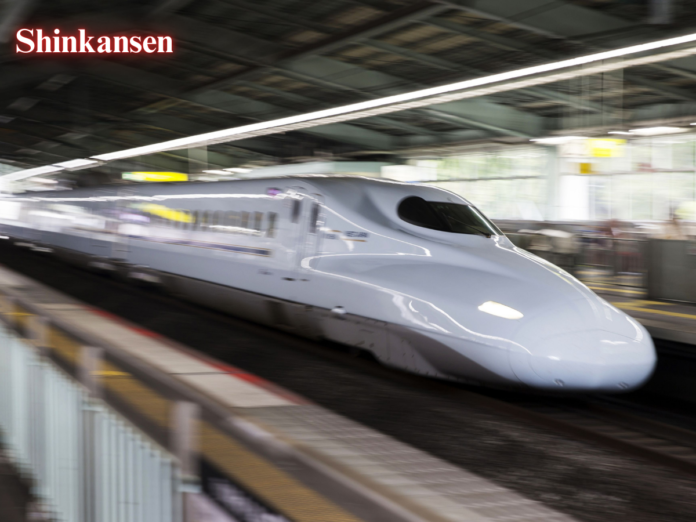The Shinkansen, or bullet train, symbolizes Japan’s engineering and efficiency. Since its start in 1964, this high-speed rail system has set the benchmark for modern train travel. It has advanced in speed and technology. This article explores Japan’s bullet trains. It covers their speed, technology, and future.
Historical Background
Japan developed the Shinkansen in the early 20th century. It aimed to modernize its transport system. The first line, the Tokaido Shinkansen, opened in 1964, connecting Tokyo and Osaka. Initially, these trains reached speeds of up to 210 km/h (130 mph), a remarkable achievement at the time. Over the decades, Japan expanded its Shinkansen network. It added lines like the Sanyo, Tohoku, Joetsu, Hokuriku, and Kyushu Shinkansen.
Current Speed Capabilities
Today, the Shinkansen network includes some of the fastest trains in the world. The E5 and E6 Series trains run on the Tohoku and Akita Shinkansen lines. They can reach speeds of 320 km/h (200 mph). The N700S Series, introduced in 2020, travels at 300 km/h (186 mph) on the Tokaido and Sanyo Shinkansen lines. These trains are fast. They have safety and comfort features, like active suspensions and quake detectors.
Speed Variations Across Lines
Different Shinkansen lines have different speed limits. They depend on the terrain and urban density.
- Tokaido Shinkansen: This busy line connects Tokyo with Osaka and operates at a maximum speed of 300 km/h (186 mph). The N700S trains, known for their smooth acceleration, run mainly on this line. They are efficient.
- Sanyo Shinkansen: Extending from Osaka to Fukuoka, this line supports speeds of up to 300 km/h (186 mph). The Nozomi trains offer the quickest journey times here.
- Tohoku Shinkansen: It serves northeastern Japan. The Hayabusa and Komachi trains on it can reach 320 km/h (200 mph), the fastest of all Shinkansen lines.
Maglev Technology: The Future of High-Speed Rail
Japan is advancing further with the development of the Maglev (magnetic levitation) train. The Chuo Shinkansen line, under construction, aims to connect Tokyo and Osaka in just over an hour at 500 km/h (311 mph). Maglev technology uses powerful magnets to levitate the train above the tracks. This reduces friction and allows for high speed and efficiency.
Technological Innovations
The Shinkansen is famous for its technology. It ensures high speeds, safety, and comfort. Key innovations include:
- Active Suspension Systems: They stabilize the train at high speeds. They provide a smooth ride on uneven tracks.
- Earthquake Detection: Japan’s frequent seismic activity requires quick action. The Shinkansen system can quickly stop trains during an earthquake. This reduces derailment risks.
- Aerodynamic Design: The Shinkansen’s long, pointed nose cuts air resistance. This allows for higher speeds and lower energy use.
Environmental Considerations
High-speed rail, like the Shinkansen, is better for the environment than air and road transport. It emits much less greenhouse gas per passenger kilometer. The N700S Series uses lightweight materials and regenerative brakes. This cuts energy use by 7% compared to its predecessor.
Impact on Japanese Society and Economy
The Shinkansen has significantly affected Japanese society and the economy. It has revolutionized travel. It has cut journey times and boosted regional economies. It has also enabled long commutes between distant cities. Its efficiency and reliability make it popular for business and leisure travel. This has boosted Japan’s tourism and economy.
Challenges and Future Prospects
The Shinkansen is successful but faces challenges. Its infrastructure is aging. Maintenance costs are high. Budget airlines compete with it. Also, building new lines (like the Chuo Shinkansen) is costly and harms the environment.
Nevertheless, the future of the Shinkansen looks promising. Japan plans to introduce faster, more efficient trains and expand the network. It continues to innovate. The upcoming Maglev trains are a new frontier in high-speed rail. They may set a new global standard for train travel.
Conclusion
The Shinkansen exemplifies Japan’s dedication to technological excellence and innovation. Japan’s bullet trains, from their early days to the latest Maglev, set new standards. They excel in speed, safety, and efficiency. With a push for sustainable transport, the Shinkansen is a model for high-speed rail.


